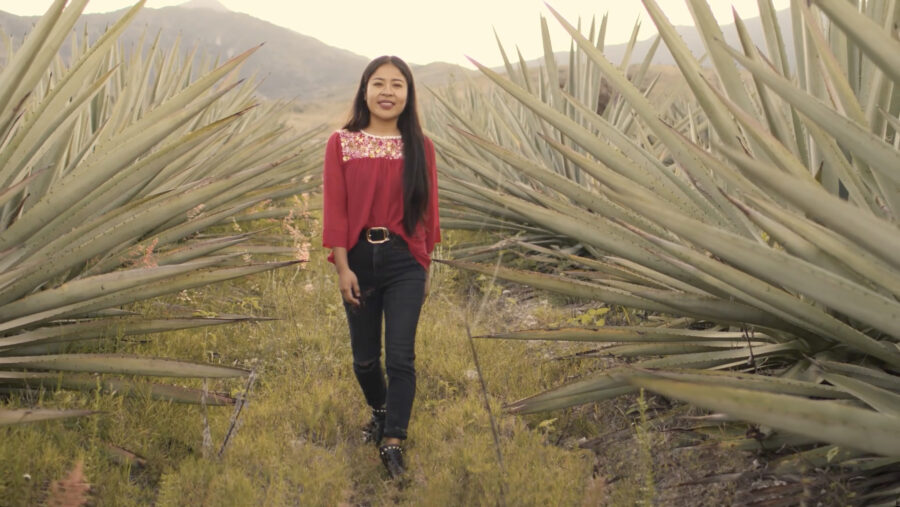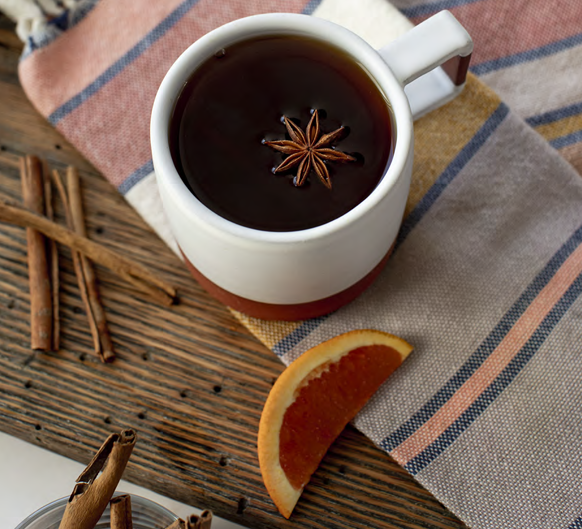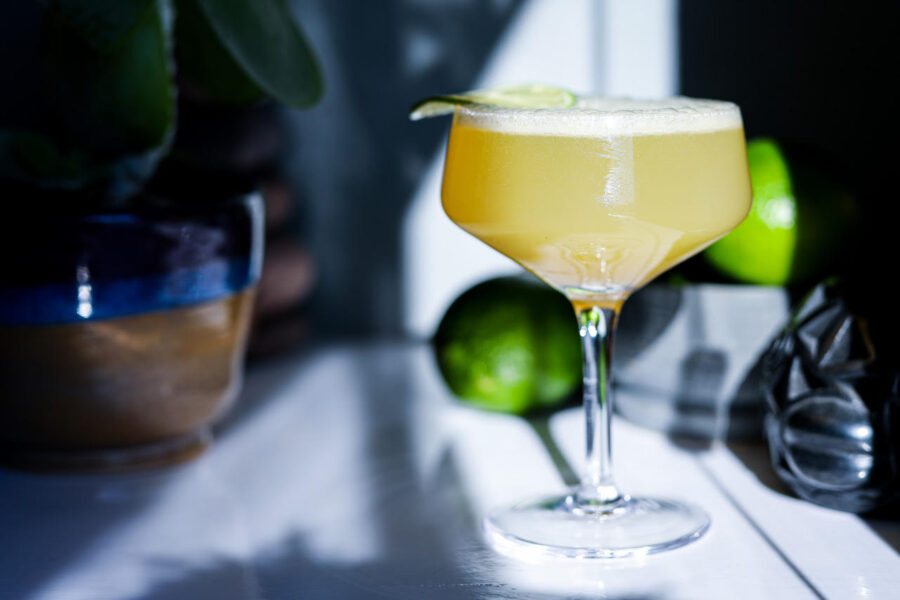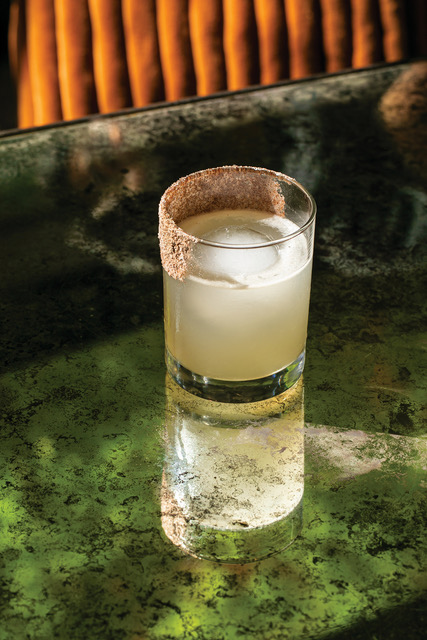To many, World Mezcal Day serves to honor the mezcaleros and mezcaleras who have steadfastly preserved the Mexican mezcal tradition for centuries. But, for those who work within the proverbial trenches of this rapidly burgeoning spirits market, mezcal is both a cultural identity and a daily way of life.

Mezcal, second only to tequila by sales when compared to other agave-based distillates, varies significantly from its more ubiquitous cousin. Mexico’s strict denominational rules require the latter to be made almost exclusively in Mexico’s Jalisco state; mezcal production is primarily concentrated in the state of Oaxaca. Tequila must also be distilled from mature blue agave plants; comparatively, mezcal requires no specific species of agave in its production processes. Mezcal is also often categorized by its distinctly smoky flavor profile, a result of being pit-roasted underground after harvest and before the distillation process.
Mezcal’s Dark Origins
Unfortunately, agave’s evolution into mezcal, (a term that owes its etymology to the Nahuatl word mexicali, meaning ‘cooked agave’), didn’t occur without tremendous violence and human loss. Though many speculate that Spain’s conquest of the Aztec civilization in the early 16th century introduced Mexico to distillation, others credit the Philippines — colonized by Spain within decades after the Aztecs fell — for passing this technique to the Americas via the Trans-Pacific slave trade route that connected Manila and Acapulco.
From the ashes of mezcal’s dark history evolved a distinctly Oaxacan spirit projected to more than double its market size between 2024 and 2032 to roughly $2.5 billion. And, one company, ZOMOZ Mezcal, is working like many others to fortify Mexico’s mezcal-making tradition for a new generation of imbibers.
ZOMOZ Mezcal: A Brand Shepherding Mexico’s Cultural Renaissance
ZOMOZ was created by fourth-generation mezcalera Isabel Santiago and business partners Eloy Cantu and Diego de la Vega Fernández shortly after they established Project Agave Inc., a collective Santiago lauds as, “the new Mexican Renaissance.” Since 2021, Project Agave has worked to share Mexico’s rich heritage, from antiquity to modernity, to the world through fashion, music, art, and hospitality. ZOMOZ eventually became Project Agave’s first product in mid-2023.
“[B]ecause both of them were young entrepreneurs who had a desire to start and grow a brand, we clicked well,” Santiago told Beauty News NYC. “Diego shared his idea of where he wanted to go with [ZOMOZ], and we were aligned with his vision. So we got to work to get the project moving; we presented profiles, we did the paperwork, and from there, we haven’t stopped moving.”
Santiago, ZOMOZ’s maestro mezcalera, learned her craft at a young age from her father while growing up in Oaxaca; she truly stands in contrast to her contemporaries, who are generally older and male. These factors haven’t deterred her from carving a distinct niche for herself and other young mezcal producers within a centuries-old tradition.
“As a young woman in the mezcal industry, I’ve been able to bring a fresh perspective while honoring the traditions passed down through generations, says Santiago. “My education and upbringing have allowed me to merge traditional techniques with new ideas, demonstrating that women are fully capable in this field.”
What sets ZOMOZ apart from other brands, according to Santiago, is its unique filtering process, which creates a smooth, highly palatable beverage for mezcal aficionados and novices alike. Through ZOMOZ, Santiago hopes to educate others about mezcal and its possibilities.
“One of the biggest misconceptions is that mezcal is just a smoky version of tequila or a harsh spirit. In reality, mezcal has its own unique identity and production methods,” says Santiago, adding that mezcal production is almost exclusively done on an artisanal scale compared to tequila’s more industrialized production processes. “Behind each bottle of mezcal is immense hard work and a deep connection to the spirit of each agave plant.”
Natalia Garcia Bourke, beverage professional and co-author of How To Make Better Cocktails couldn’t agree more. “Mezcal is not just one profile or [flavor], there is such a huge variety of agave that can be used to make mezcal, which in turn means an extremely varied and distinct selection of flavor profiles,” says Bourke in explaining how terroir — a region’s unique ecology — can impact flavor. “Producers get to tell the story of the agave’s lifespan, as it is a time stamp of what happened in that region during that decade or even decades.”
While Santiago prefers her mezcal neat (“I prefer mezcal alone and in sips, so I can savor the essence that the maguey gives us through the mezcal.”), others have gotten a bit creative in their presentation of the spirit.
Mix(to) It Up
For cocktail fans, there’s certainly no shortage of recipes to choose from. Beauty News NYC had the opportunity to ask leading spirits professionals their picks for mezcal cocktails to ring in World Mezcal Day. Here are some of their choices:

Image by Christine Souder
Mike Wolf, author of Cheer: A Liquid Gold Holiday Drinking Guide and other cocktail-inspired books, opts for mezcal in place of whiskey in his Hot Toddy riff for the complexity it adds to the classic cold-weather beverage.
“I wanted a hot toddy recipe that really showed the weight and flavor of the spirit involved. I wanted something that paired with a big roaring fire,” Wolf told Beauty News NYC.
Mezcal Toddy
1 black tea bag (or tea of your choice)
1½ oz. mezcal
½ oz. agave nectar
1 dash Angostura or cinnamon bitters
A tiny pinch of salt
Garnish: orange wedge; rosemary; sage
Instructions (from Cheer): “Begin by boiling enough water for twice the amount of drinks that you’re making. When the water is ready, pour enough into your mug to temper it so it keeps warm for the duration of your drink…Once the mug is fully hot and ready for action, discard the tempering water and make the tea by pouring more water, adding the tea bag, and covering the mug for maximum extraction.”

Both Bourke and her co-author and business partner Sebastian Hamilton-Mudge opt for a more tropical approach to cocktailing with mezcal.
Smoky Pineapple Margarita1 oz mezcal (or 1 part)
½ oz triple sec (½ part)
2oz pressed pineapple juice (2 parts)
½ oz lime juice (½ part)
1-3 dashes green hot sauce
1 pinch sea salt
Instructions: Add all ingredients to a cocktail shaker. Fill the shaker with ice then shake hard. Double strain into a cocktail glass or coupette to remove any debris and break large air bubbles to give a thicker, richer foam on top.

Jason Hedges, entrepreneur, beverage professional, and author of the book, The Seasonal Cocktail, leans on grapefruit and vanilla notes to liven up his mezcal drink, the Midnight Devil.
“I was looking to create a cool weather mezcal margarita variation,” says Hedges. “As the name suggests, there’s a touch of darkness and mystery around it. [ZOMOZ] brings a blend of earthy, smokey flavors that compliment the citrusy brightness of the grapefruit and spicy edge of the jalapeno—offering a blend of balanced yet unexpected flavors to warm you up on a chilly evening.”
Midnight Devil
2 oz fresh grapefruit and jalepeno-infused ZOMOZ Mezcal
¾ lime juice
½ oz Cointreau
½ oz vanilla syrup

